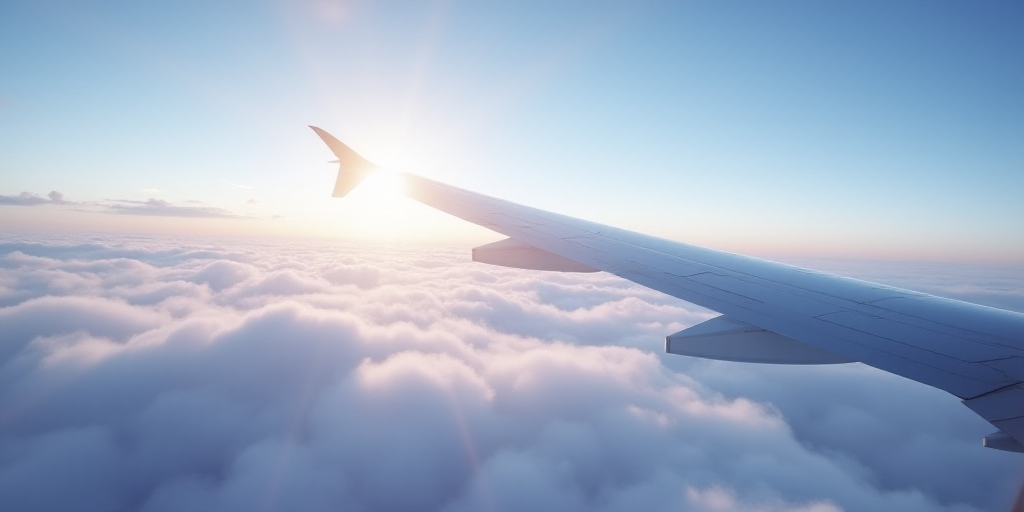Why Turbulence Matters
Beyond startling passengers, turbulence is the leading cause of minor in-flight accidents, according to official data. Although only 207 injuries were reported in U.S. commercial flights between 2009 and 2024, some incidents have had significant consequences. Last year, turbulence on an Air Europa flight left 40 passengers injured, and another incident on a Singapore Airlines flight resulted in the death of an elderly traveler.
John Abraham, a mechanical engineering professor at the University of St. Thomas, told AFP that injuries typically occur in passengers not wearing seatbelts or among cabin crew, rather than causing structural damage to the aircraft. “Modern aircraft can withstand turbulence, so the primary risk is injuries to occupants, not losing the aircraft,” Abraham said.
Nevertheless, planes must be inspected after encountering “severe” turbulence events, which occur around 5,000 times a year in the U.S., according to Robert Sharman, a researcher at the National Center for Atmospheric Research. Turbulence also increases fuel consumption when pilots must abandon optimal altitudes, alter flight paths, or adjust speed.
Climate Change is Exacerbating the Problem
Mohamed Foudad, a scientist at the University of Reading in the UK, explains that there are three primary types of turbulence: convective, mountain wave, and clear-air turbulence (CAT). Convective turbulence occurs due to ascending or descending air currents and can be easily spotted or detected by onboard radar, while mountain wave turbulence occurs only over mountain ranges.
CAT, however, is invisible and thus the most dangerous. It generally arises from jet streams—fast western winds in the upper atmosphere, at the same altitude as commercial aircraft’s cruising height, approximately 10 to 12 kilometers above the ground.
With climate change, tropical regions are warming faster at the cruising altitude than higher latitudes. This increases the temperature difference between higher and lower latitudes, which in turn accelerates jet stream speed and wind shear—sudden changes in air currents that trigger CAT turbulence.
Foudad and his colleagues published a study in the Journal of Geophysical Research: Atmospheres last year, analyzing data from 1980 to 2021. “We found a clear positive trend: an increase in turbulence frequency in many regions, including the North Atlantic, North America, East Asia, Middle East, and North Africa,” Foudad told AFP. The increases ranged from 60% to 155%.
What’s Next?
Isabel Smith’s 2023 article concluded that for each degree Celsius of surface warming, there would be approximately a 9% increase in moderate CATs during winter and a 14% rise in summer. Historically, winter has had the most turbulence, but global warming now increases its prevalence in summer and fall.
“Climate change could also increase the frequency and severity of thunderstorms in future scenarios, and encounters with turbulence near them are a significant component of turbulence-related accidents,” Sharman explained to AFP.
Regarding mitigation strategies, Foudad is currently working on studies to optimize flight routes and improve turbulence forecasting. Some airlines aim to increase seatbelt usage through strategies like completing cabin service earlier.
Promising onboard technologies, such as lidar (which uses lasers to detect subtle changes in air density and wind speed), are being tested. However, reducing emissions ultimately remains crucial, Foudad added. Aviation accounts for about 3.5% of human-induced global warming.
While airlines are exploring cleaner fuels, progress has been “disappointingly slow,” according to the International Air Transport Association.
Key Questions and Answers
- Q: How does climate change affect aircraft turbulence? A: Climate change intensifies turbulence by increasing temperature differences between latitudes, accelerating jet stream speed and wind shear, which trigger clear-air turbulence (CAT).
- Q: What are the consequences of turbulence for passengers and aircraft? A: Turbulence can cause injuries, primarily to passengers not wearing seatbelts or cabin crew. It also increases fuel consumption and requires post-turbulence inspections.
- Q: What types of turbulence exist, and which is the most dangerous? A: The three main types are convective, mountain wave, and clear-air turbulence (CAT). CAT is the most dangerous as it’s invisible and often caused by jet streams.
- Q: How can the aviation industry mitigate turbulence-related risks? A: Strategies include optimizing flight routes, improving turbulence forecasting, increasing seatbelt usage, and exploring cleaner fuels.
- Q: What is the role of lidar technology in addressing turbulence? A: Lidar, which uses lasers to detect subtle changes in air density and wind speed, is a promising technology being tested onboard to improve turbulence detection.






